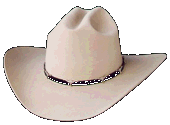Sunday, March 25, 2007
Life on Earth - Episode 09 - The Rise of the Mammals
"The ninth episode is the first of several to concentrate on mammals. The platypus and the echidna are the only mammals that lay eggs (in much the same manner of reptiles), and it is from such animals that others in the group evolved. Since mammals have warm blood and most have dense fur, they can hunt at night when temperatures drop. It is for this reason that they became more successful than their reptile ancestors, who needed to heat themselves externally. Much of the programme is devoted to marsupials (whose young are partially formed at birth) of which fossils have been found in the Americas dating back 60 million years. However, because of continental drift, this kind of mammal flourished in Australia. Examples shown include the quoll, the Tasmanian devil, the koala, the wombat and the largest marsupial, the red kangaroo. The thylacine was similar to a wolf but is now thought to be extinct. In 1969, bones of creatures such as a 3 metre-tall kangaroo and a ferocious marsupial lion were found in a cave in Naracoorte, South Australia. The reason for these animals' extinction is, once again, thought to be climate change. Finally, Attenborough describes the most prolific mammals — those that originated in the Northern Hemisphere and give birth to fully formed young. He states, "The placenta and the womb between them provide a degree of safety and a continuity of sustenance which is unparalleled in the animal world.""
Subscribe to:
Post Comments (Atom)












2 comments:
Life on Earth is not available! Could you publish the videos at Google Video?
That's where I found them, but they were removed. I don't have them to publish.
Post a Comment